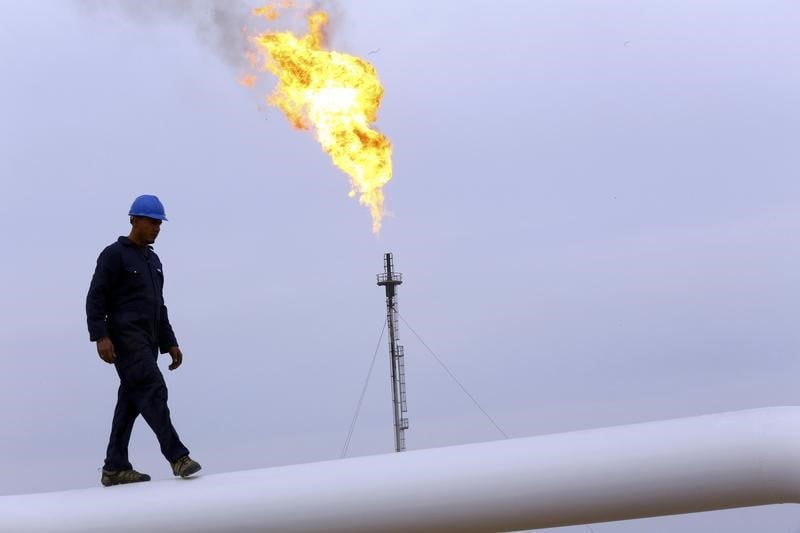Oil Down 2% as Wall Street Tumbles on China Contagion Worry By Investing.com
[ad_1]
 © Reuters.
© Reuters. By Barani Krishnan
Investing.com – Global oil markets tumbled as much as 2% Monday as Wall Street cratered amid worries about a China debt crisis that triggered a flight to safety among investors.
Signs that U.S. crude oil production is returning to normal after a three week-long clampdown on its output due to Hurricane Ida in August were also weighing down.
New York-traded crude oil, which is the U.S. benchmark, closed at $70.29 per barrel, down 1.3%.
London-traded crude, the global benchmark for oil, finished the session down $1.42, or 1.9%, at $73.92.
Wall Street’s three main stock indexes — the , and — all fell about 2% or more. The tech sector bellwether Nasdaq was facing its biggest loss in nearly seven months. Even the yield on the —- which had rallied over the past week — plunged its most in nearly a week.
The was the only contrarian to the trend, rising to a four-week high.
Global markets plunged as a growing debt crisis at major Chinese property group Evergrande sparked concerns about spillover risks in the world’s second-largest economy.
“China has been doing lots of things over the past couple of months now to the extent they are messing with the economy there, and that could impact its demand for crude oil,” said John Kilduff, founding partner at New York energy hedge fund Again Capital. “They are the swing demand center, in the same way the Saudis are the swing producer. Everything depends on China’s actions. If we lose China, we’ll lose the oil rally.”
Adding to the bearish sentiment in oil were remarks over the weekend from China’s Premier Li, who said Beijing will use “market tools” to stabilise commodity prices. This seemed to be an indirect message for more metals and oil supplies from stocks, rather than expensive imports.
Since Friday, a dark mood had set in on risk markets after U.S. Treasury Secretary Janet Yellen reiterated her warning that America could fall into a new recession if Congress does not reach a deal soon to raise the country’s debt limit. The process of raising the debt limit was compared to an exercise in rubber stamping. But in today’s politically divided United States, it has become a crisis in its own right.
To top the list of worries, the Federal Reserve’s FOMC, or Federal Open Market Committee, will begin on Tuesday a two-day meeting that will be keeping investors on tenterhooks.
Since March 2020, speculation has swirled that the central bank would announce a reduction in its $120 billion asset and bond buying program. The Fed’s timeline for scaling back economic stimulus is important as it represents a first step towards an eventual hike in interest rates, which it has kept at near zero over the past 18 months.
On the basis of COVID’s resurgence through the Delta variant, some of the Fed’s most senior officials, including Chairman Jay Powell, tried to hold off on reducing the stimulus. However, they failed.
On Wednesday, Chairman Jay Powell will likely make mixed statements about the taper. The Fed might issue this time a vague statement. The Fed is unlikely to announce the taper until November according to most pundits.
Yet, in a market already operating on excessive fear, it’s more likely for investors to err on the side of caution.
“Coming on a day where liquidity is lower … markets are nervous and the U.S. dollar (has) risen ahead of the FOMC, there is an outsized impact,” said Jeffrey Halley, who heads Asia Pacific research at online trading platform OANDA.
On Hurricane Ida-related outages, the Bureau of Safety and Environmental Enforcement reported that less than 19% of US Gulf oil production remained shut in versus last week’s levels of 25%.
[ad_2]
